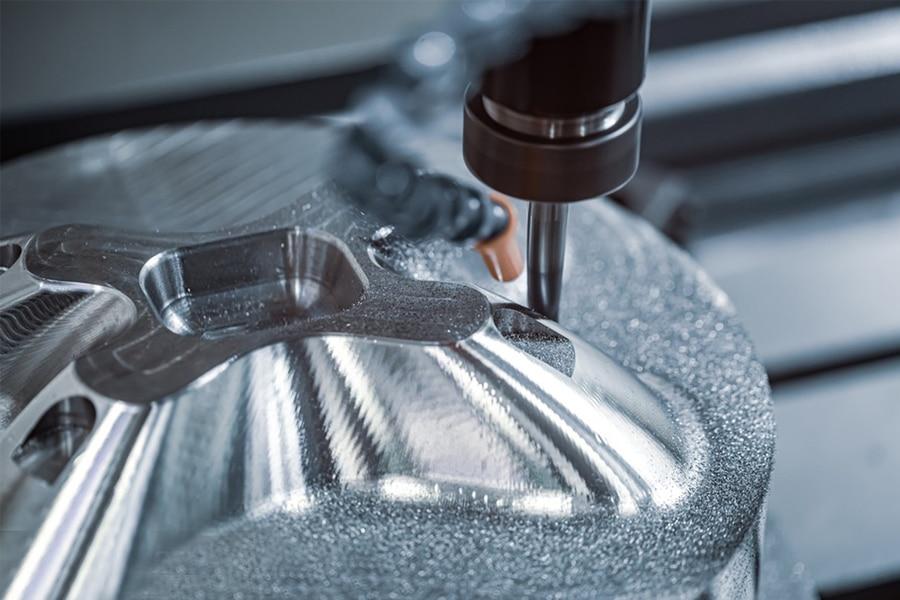CNC machining medical parts process
CNC machining plays a crucial role in the production of medical parts and components. The use of computer numerical control (CNC) technology allows for precise and repeatable manufacturing processes, making it well-suited for the medical industry’s stringent requirements. Here’s how CNC machining is applied to produce medical parts:
- Design and Engineering: Medical parts are first designed using computer-aided design (CAD) software, taking into account the specific requirements of the application. The design includes dimensions, tolerances, material specifications, and any necessary features or surface finishes.
- Material Selection: The appropriate medical-grade material is selected based on factors such as biocompatibility, sterilization compatibility, strength, and chemical resistance. Common materials used in medical CNC machining include stainless steel, titanium, aluminum, and various medical-grade plastics.
- CNC Programming: CNC programmers create a program that defines the toolpaths and cutting parameters for the CNC machine. The program translates the CAD design into instructions that the machine will follow during the machining process.
- Machine Setup: The CNC machine is set up for the specific part, including securing the raw material in place, loading the necessary cutting tools, and configuring the machine parameters. Fixturing and workholding devices are utilized to ensure stability and accuracy during machining.
- Machining Operations: The CNC machine executes the programmed instructions, performing various machining operations such as milling, turning, drilling, or grinding. These operations shape the raw material into the desired form, creating the medical part with high precision and tight tolerances.
- Inspection and Quality Control: Throughout the machining process, quality control measures are implemented to ensure that the parts meet the required specifications. This includes dimensional checks, surface finish evaluation, and, if necessary, additional tests for specific medical applications.
- Post-Machining Processes: Depending on the part requirements, additional processes may be applied after CNC machining. This can include deburring, polishing, surface treatments (such as passivation or anodizing), or laser marking for identification or traceability purposes.
- Cleaning and Sterilization: Medical parts often undergo cleaning and sterilization procedures to ensure they meet the necessary hygiene and safety standards. This can involve ultrasonic cleaning, autoclaving, chemical sterilization, or other validated methods based on the part’s material and application.
CNC machining in the production of medical parts provides numerous benefits, including high precision, repeatability, and the ability to manufacture complex geometries. It enables the creation of customized components for medical devices, surgical instruments, implants, prosthetics, and other critical applications. The use of CNC technology ensures the consistent production of high-quality, reliable, and safe medical parts.
Applications for CNC Machining Medical Parts Manufacturing
CNC machining is widely used in the medical industry for manufacturing various parts and components. Here are some common applications for CNC medical parts manufacturing:
- Surgical Instruments: CNC machining is used to produce precise and intricate surgical instruments such as forceps, scalpel handles, retractors, clamps, and orthopedic instruments. The high accuracy and repeatability of CNC machining ensure that these instruments meet the required specifications and provide reliable performance during surgical procedures.
- Implants and Prosthetics: CNC machining is employed to create custom implants and prosthetics, including joint replacements, dental implants, spinal implants, cranial implants, and limb prosthetics. The ability to accurately machine complex geometries and produce customized designs is crucial in achieving a proper fit and functionality for each patient.
- Medical Device Components: CNC machining is utilized for manufacturing components for various medical devices, including diagnostic equipment, imaging systems, infusion pumps, respiratory devices, and patient monitoring devices. These components may involve intricate features, tight tolerances, and the use of specialized materials to meet the stringent requirements of the medical industry.
- Enclosures and Housings: CNC machining is applied to produce enclosures and housings for medical devices, providing protection and support for sensitive electronic components. These components may require precise cutouts, threads, and interfaces to accommodate buttons, displays, connectors, and other device features.
- Surgical Guides and Templates: CNC machining is used to create surgical guides and templates that assist surgeons in precise and accurate procedures. These guides are customized for each patient, helping to ensure correct incisions, implant placement, and alignment during surgeries.
- Laboratory Equipment: CNC machining is employed to manufacture various components for laboratory equipment used in medical research and diagnostics. This can include parts for microscopes, centrifuges, spectrometers, DNA sequencing devices, and other analytical instruments.
- External Prosthetic Limbs: CNC machining is utilized to produce external prosthetic limbs, including arm and leg prostheses. The technology enables the creation of lightweight and durable components that can be customized to match the unique needs and preferences of individual users.
- Dental Restorations: CNC machining is used in the production of dental restorations, such as crowns, bridges, and dentures. The precise milling of dental materials, including ceramics or composite resins, ensures accurate fits and functional aesthetics.
CNC machining in medical parts manufacturing offers the advantages of precision, customization, repeatability, and the ability to work with a wide range of materials. These capabilities contribute to the development of innovative medical devices, improved patient outcomes, and advancements in medical treatments.

